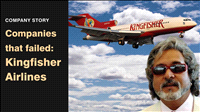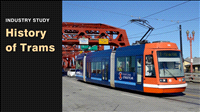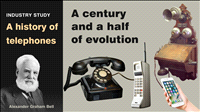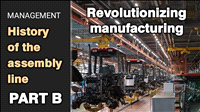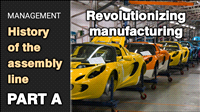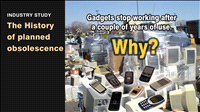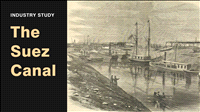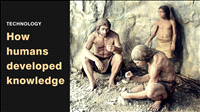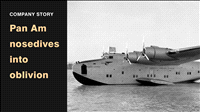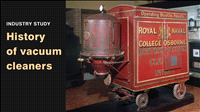The History of Trolley Buses, Industry history
By Kiron Kasbekar | 23 Oct 2023
Hi, everyone! Welcome to the Business History Channel!
I am Kiron Kasbekar, and the video I am presenting to you today is about the history of trolleybuses, those urban public vehicles that were powered by electricity, like trams, but ran on tyres, like buses, bringing the best of both worlds to city commuters.
The electric power made them a pollution-free option. And the use of tyres instead of rails gave them the maneuverability that trams did not have.
These hybrid vehicles may sound strange to people who have not used them. Younger people I talked to about trolley buses had not even heard of them until I mentioned them.
But trolley buses have been around for more than a century. Until not so long ago, that is, until around the 1970s, trolley buses plied on city roads in many countries. In Britain, the US, Canada, Greece, Russia, Belarus, Brazil, South Africa, China, in India, and in many other countries…
For those who have not seen trolley buses, let alone traveled on one, let me explain what exactly they are.
As I said earlier, they look like buses, except for the trolley pole, called the pantograph, and its connection to an overhead cable, called the catenary.
See the descriptive diagram of the trolley bus:
The horizontal line you see on top is the catenary, the overhead power cable which channels power to the pantograph, that is, the dark diagonal pole that connects the bus to the catenary drawing power from it to drive the trolley bus. You can also see a thinner line from the pantograph to the back of the trolley bus – that is simply a line to pull the pantograph down and anchor it when the trolley is parked and does not need to draw power.
Trolley buses first came on the scene in Britain in the beginning of the last century, the 20th century, even as automobiles began to come on the roads.
Early automobiles used different methods of propulsion, including steam power. Did you know that? But I am talking of the time before they began to use petrol, or gasoline, or gas, as the Americans prefer to call it.
Trolleys used electricity. A century before the present time when people have begun to talk of electric vehicles as an alternative to petrol- and diesel-driven vehicles.
The first trolleybus came on the road in Germany on 29 April 1882 in Halensee, a Berlin suburb, when Ernst Werner Siemens demonstrated what he called his ‘Elektromote’. Ernst Werner Siemens, incidentally, was the founder of the company we all know as Siemens.
His experiment continued for a month and a half.
The plan to create such an electric vehicle was buzzing in Siemens’s mind since 1847. He told his brother Wilhelm then that if had the time and money, he would build a carriage with electro-magnetic propulsion. He managed to bring his idea to fruition in 1881, when he erected masts and other infrastructure for trolleys on site.
At that time Halensee had not yet been integrated with Berlin. That gave Siemens the flexibility he needed to obtain the space needed for the project. You can see what the Elektromote looked like this.
Many years later, in 1899, a vehicle that could run either on or off rails was showcased in Berlin. After that, Louis Lombard-Gérin, who had done four years of trials, ran an experimental line at the Paris Exhibition of 1900. It had a circular route around Lake Daumesnil and carried passengers.
Many years later, in 1899, a vehicle that could run either on or off rails was showcased in Berlin. After that, Louis Lombard-Gérin, who had done four years of trials, ran an experimental line at the Paris Exhibition of 1900. It had a circular route around Lake Daumesnil and carried passengers.
Several other experimental lines were created in different cities in Europe, beginning with Germany. And some experiments were conducted in America too.
Remember, petrol-driven vehicles came on the scene only around the turn of the last century. The first commercial production of petrol-driven vehicles began only in 1886, when Carl Benz launched his cars. And then it took some time for these vehicles to pick up speed in the marketplace, which was still dominated by horse-drawn carriages.
Electric transport had been tried earlier. Before trolleybuses were introduced in the late 1880s, experiments were already underway for the use of electric propulsion for public transportation. Electric trams, also called streetcars, powered by overhead wires had become common.
Then, in the early years of the 20th century, as buses gained popularity, inventors began to explore ways to electrify them. The idea was to have them run on electricity but, unlike trams, not on tracks.
In 1902, a British engineer named E.W. Pickering experimented with an early form of trackless trolleybus in London.
The first successful trolleybus system was implemented in Bradford, England, in 1911. These early trolleybuses drew power from overhead wires and featured large traction motors.
After that, by 1926, trolleybus systems were introduced in several European cities, including Berlin and Nuremberg. By the 1930s trolleybus networks had expanded across Europe and in America. Cities like Paris, Lyon, and Moscow embraced trolleybuses as a clean and practical alternative to traditional buses.
Unlike trams, these vehicles were free from the restrictions of tracks; they received their power from overhead cables and ran on wheels with tyres like the ones buses have. Because they got their power from overhead electric cables instead of internal combustion engines, they provided clean as well as affordable and quick transport for the population of cities.
Trolley buses became a common sight in many metro cities after that. They wove through the streets, drawing power from overhead electric cables, as trams did, but, unlike trams, they did not have to stick to a straight line. They could zigzag quite a bit within the freedom they had because, for while they were connected to overhead electric cables from which they drew their power, they were not tied down to sunken rails like trams were.
The Second World War temporarily slowed the expansion of trolleybus networks, as governments were compelled to use resources for war spending. After the war was over, trolleybus systems expanded, and new networks were established in cities like Vancouver in Canada and Melbourne in Australia.
Then came the onslaught of cars. While trolleybuses offered advantages such as low operating costs and reduced emissions, the attraction of cars and the greater route flexibility of flexible diesel buses began to push trolleybuses into a corner. Cities decided if there were no trolleybuses they wouldn’t have the bother of maintenance of the electric infrastructure.
So, many cities began to phase out trolleybuses in favor of diesel buses, citing the perceived inflexibility of fixed wires and maintenance costs. That process continued until the mid-1970s until very few trolleybus systems were left in the world.
Cities that continued to use trolleybuses included San Francisco, Seattle, and Zurich.
For some reason, Bombay was perhaps the only Indian city that tried these trolley buses across some parts of the city. Unfortunately the experiment did not endure. The trolley buses were launched in 1962, and withdrawn in 1971.
As traffic increased, and as the number of commuters grew, it was felt that regular buses better served the purpose of mass transit. They were not tied to overhead electric cables.
The number of buses rose dramatically, and so did the routes they plied as the city expanded and brought in more areas within its fold. They were good for commuting from one end of the city to the other, and to move shorter distances, as the feeder routes did, from local railway stations to residential or work destinations a mile or two away.
The local railways, which did a bulk of the heavy lifting, worked hand in glove with the bus services. The bus services supplemented the local railways as well as rivaled them.
And then it stopped. If you visit Bombay (or Mumbai) today, you will find that the number of bus services has dwindled, and the number of private vehicles has shot up – private cars, two-wheelers, and taxis crowd the roads so much there is hardly any place for buses.
There is this constant argument about commuting in Mumbai. One side argues that the public services are too crowded and slow, having to halt at numerous stops on every route. Others contend that if there were less cars on the road, then more buses could run on the same road space. And the buses would carry many more people in the same space. Much of our traffic congestion would be solved, and there would be less fuel consumption and less pollution.
What applies to Bombay applies to big cities across the world.
The main public transport options were the bus, the local train, and the tram. You could also hire a taxi, but for a long time most people could not afford taxis.
In Britain, trolley buses had been like workhorses of the public transport network. Not only were they cheap, they were environmentally friendly compared to petrol- and diesel-driven vehicles.
But they could not fend off pressures from the automobile lobbies. The last of the trolley buses in the UK were shut down in Cardiff in 1970, in Teesside in 1971, and in Bradford in 1972.
It’s now about half a century since trolley buses went off the roads in many cities. But the wheel is coming full circle. The rising prices of petrol and diesel and mounting environmental concerns are forcing authorities to reconsider the use of trolley buses.
Trolley buses should be the clear choice. However, some people argue in favor of battery-powered buses. Battery-powered vehicles are indeed better than petrol- or diesel-driven ones. But they have severe disadvantages. When batteries require recharging, it takes hours to do so, unlike petrol or diesel vehicle tanks that get refilled instantly.
And people have begun to express concerns about the recycling of batteries when they reach the end of their lives in a few years. The accumulation of dead batteries is considered a serious future problem.
While electric buses seem to be the future, battery technology is not yet adequate. In contrast, trolleybuses do not need to stop to be recharged as they get power continuously from the system.
And that is why I too think we need to look at trolleybuses as a serious alternative to our current vehicles.
Trolleybuses are not as inflexible as some people might imagine. The main concern about these vehicles is that their movement is restricted by their connection to the overhead cables.
But, hey! That is no longer really so! Today we have three choices of trolley buses:
- Trolley buses that run fully on electricity from overhead catenaries (power cables);
- Trolley buses that get 70 to 90 per cent of their power from overhead catenaries and 30 to 10 per cent from batteries; and
- Trolley buses that get 20 to 40 per cent of their power from overhead catenaries and 80 to 60 per cent from batteries
There are challenges. Creating the overhead cable infrastructure is one. The relative inflexibility of being tied to the proximity of overhead cables is another. But this is not a serious problem, because the batteries give the trolleybuses enough flexibility to move away from the overhead cables for a reasonable period of time for this not to become a serious constraint.
Some cities have recognized the environmental benefits of trolleybuses and their role in reducing air pollution. Newer systems and modernizations have been introduced in cities like São Paulo in Brazil.
And more cities are showing interest in trolleybuses as a sustainable transit solution. Advances like battery-assisted systems and improved wire-free capabilities, are increasing the appeal of trolley buses.
As I come to the end of this video, I wonder about how some modes of transport rise and then fade away. And a few survive. They have to transform themselves; but they survive.
This is how city transport advanced. It began with hand carts and horse-driven carriages. And then moved on to motorized transport. While in the West buses and cars quickly consigned the horse-driven carriages to limbo, Bombay continued with horse-drawn carriages for much longer, right until the mid-sixties, if I remember right, after which they were used in a very limited way only in certain parts of south Bombay, as a tourist attraction.
The days of horse-drawn carriages are over, and we may find that petrol- and diesel-driven cars and buses may also come to an end – sooner rather than later.
And some other means of transport, such as trolley buses, which were born a century ago, and were sidelined for half a century, will revive, and expand again. And that will be a very good thing for all of us.
If you liked this video on the history of trolley buses, you may also like to watch our videos on the history of trams and on the history of trams in India.






